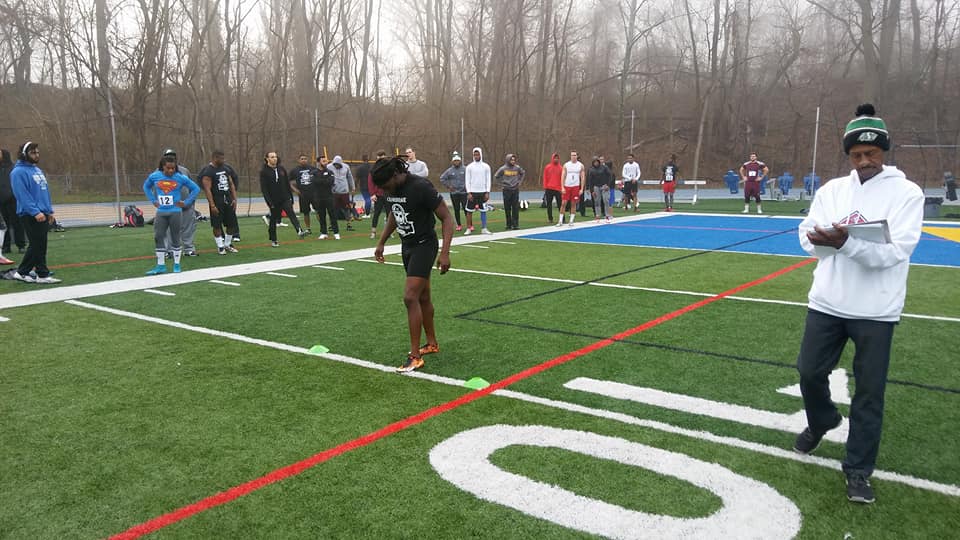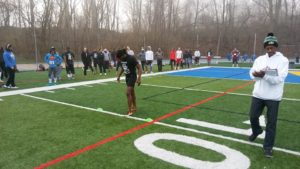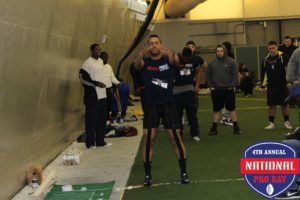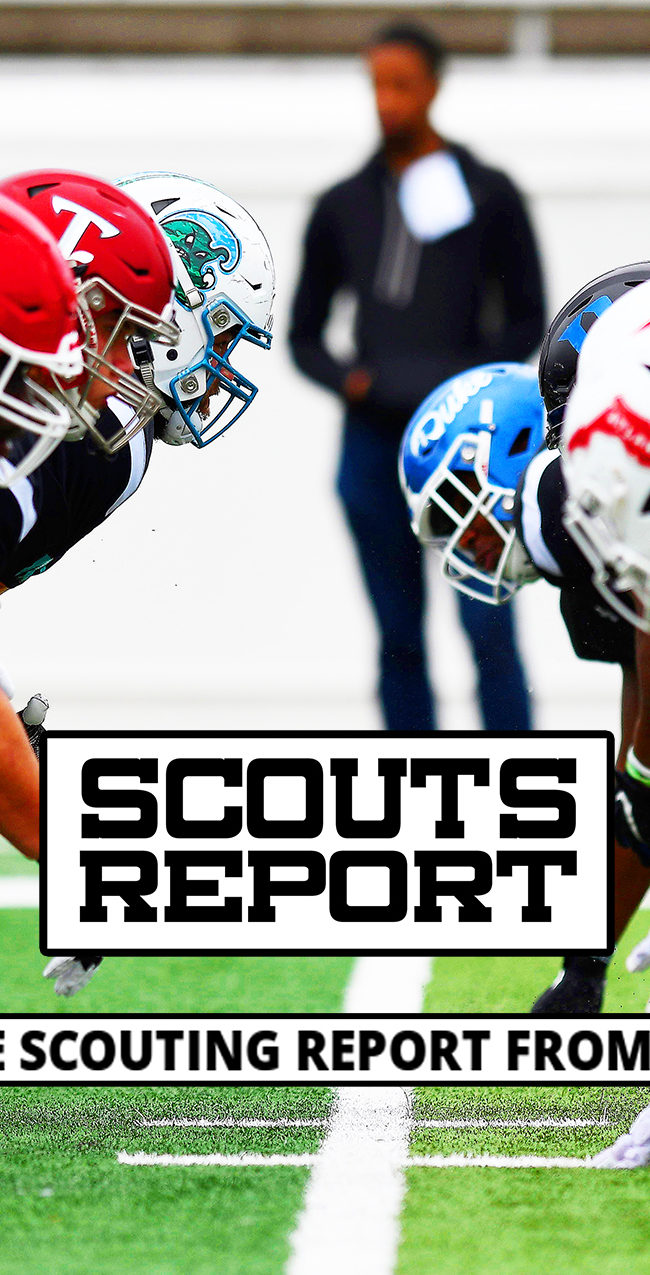
News Credit Bleacher Report:
https://bleacherreport.com/articles/1983716-why-college-pro-days-are-important-for-nfl-draft-prospects
Pictures of our “National Pro Day” X Trillion we hold each March/April for Prospects who need a pro Day


The NFL allows prospects from the small schools in a state (FCS level and lower) to workout at the FBS schools on the FBS schools pro day. That can mean an extra 30 to 35 kids at a workout. Trust me, it takes a long time to weigh, measure and time these kids in a combine-style workout. The “big schools” usually let these kids work out either before or after their kids workout, but almost never during their workout.
The advantage this has for the small-school kids is that there is usually a large contingency of scouts and coaches at the FBS school pro day. This means more exposure for the small-school player. The result is that it has turned into an opportunity that the FCS-level kids have to take advantage of.
If the small schools held their own pro days, chances are that only a few scouts would be there. During pro-day season, time is limited and scouts only get to a certain amount of schools each week. The big schools are always a priority because of the amount of prospects at each one.
In most cases, the small-school kids do exactly the same things the FBS kids do in their workouts. Most of the kids at the pro days were not at the combine, so a strong workout could get them drafted or signed to an undrafted free-agent contract. I have seen a number of times where a small school kid jumps out at a workout, and instead of being an “under-the-radar” kid, he is now “on the radar.”
Pro Days for “big” schools: measurable drills
With only 335 prospects invited to the combine, each of the big schools has plenty of players who have not worked out for scouts. This is their opportunity to shine, and many do. Each year, there are at least 35 kids who were not combine invitees who get drafted. This year, that number will be the same—if not more—because of the depth of this draft.
Scouts and coaches not only want to see the non-combine kids, they also want to be able to see the top prospects work out in a “friendly” location. The combine can be very hectic, with a lot going on in the four days each player spends in Indianapolis.
Each player goes through an extensive medical exam, takes aptitude and psychological tests, as well as interview and work out. At the combine, each club is allowed only 15 minutes in which to interview a player. Obviously it is not much time. At a pro day, there are no such rules, and a coach can become comfortable with a player.
If a player is important, a club might send in a position coach the day before the pro day to interview and do “board” work with the prospect. These sessions may last a few hours, and it gives the coach a better opportunity to learn about the player.
On numerous occasions over the years, I have had a coach come back and tell me how much he wanted a particular player on our team. Conversely, coaches have also said the opposite and told me they want nothing to do with the kid. This information is invaluable when making draft day decisions.
Just as the combine workout is important, so is the pro-day workout. The players generally start out doing all the “measurable” drills that are done at the combine. This includes weighing and measuring each prospect as well as a 40-yard dash, 20-yard shuttle, three-cone, vertical jump and long jump.
If a prospect had a strong combine workout, he may pass on doing the “measurable drills” because he has nothing more to prove, so to speak. If he performed a drill poorly at the combine, he has an opportunity to improve his time by doing it again at his pro day. It is not unusual to see a top player only do one or two of the “measurable” drills at his pro day.
Coaches Drills
Most coaches feel that this is the most important part of a pro-day workout. Everything that is done at the combine has been done every year for more than the last 20 years. They have become “learned drills.” Because of that, they might not give scouts and coaches a true indicator of a player’s real athleticism.
At pro days, coaches generally have more time to work with the players and usually put them through position-specific drills that the prospect hasn’t done before. Coaches are always looking for little things in these drills that indicate the player has the tools to play at the next level. He also gets to see how the player takes coaching and follows instruction.
This is all part of the total evaluation process. The little things are important in putting together a profile on a prospect.
Private Workouts
The best situation a coach or general manager can have is scheduling a private workout with a prospect. This gives the decision-maker a strong one-on-one look at a prospect, When you have a private workout, there is no competition with coaches from other clubs in getting “quality” time with the prospect. The coaches can spend as much time as they want with the player.
Johnny Manziel on the sidelines at the Texas A&M Pro Day as he has a personal workout set for March 27Patric Schneider/Associated Press
At a usual private workout, the coach will meet with the player in one of the schools position meeting rooms. Here the coach gets to put the player “on the board.” It is at this time a coach finds out about the player’s true mental aptitude for playing the game.
A coach may draw up a few plays for the player and instruct him as to how the play is suppose to be run. After a few minutes to absorb the instruction, the player has to repeat what he has just learned back to the coach. You would be surprised to see how telling these sessions are.
In the case of quarterbacks, a coach may ask the player to draw up a few plays on the board and explain to him the total philosophy of that play. The intuitive player can usually tell you what all 11 players are doing at the same time. This is great stuff to witness and tells you a lot about the kid.
Once the classroom session is over, it’s time for field work. Because it’s a private session, there is no time limits like pro days. An on-field workout can last well over an hour. Usually no measurable drills are done, only position specific drills.
Just like at a pro day, the coach gets a fairly good idea of how the player responds to his coaching. He can better evaluate his real athleticism and also find out about his mental toughness and aptitude. Again, it becomes invaluable information.
How it ties together
Lovie Smith told me that Devin Hester may have been one of the best athletes he had ever worked out.
Ben Margot/Associated Press
We went into that draft with the thought that we were going to get Hester. We couldn’t draft him in the first round because his play didn’t justify that high a pick. We then decided to trade out of the first round, and with the picks we got in return, it gave us a multitude of picks to work with, including two second-round picks. With the latter of the second-round picks, we selected Hester.
The result is that Hester became the best return man in the history of the NFL. Devin Hester won games all by himself. It just might be the best pick I was ever associated with. If it wasn’t for Coach Smith’s private workout, we never would have made the selection.




